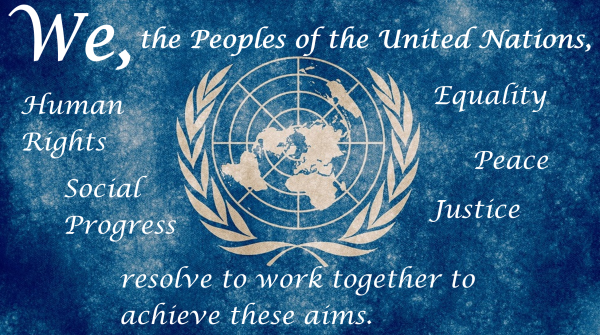In this episode of “The Beloved Community”, Mark Taliano and Andrew Ashdown shed light on what is really happening in Syria. Their evidence-based, on the ground narratives, are shockingly different from the fake, monochromatic narratives fed to Western populations on the tv and in the news.
We learn that Syria is a secular society, with a secular constitution, blessed with a “full spectrum” of Christian and Muslim communities living and thriving together.
We learn that the Western terrorists, all of them “extremists” who commit unimagineable atrocities, are commanded and controlled by NATO.
We learn that whereas the elected government led by President Assad protects all communities in Syria, including Christian communities, the terrorists exterminate Christians and Muslims and seek to impose their Wahhabi diktats and their extremist interpretations of Sharia Law wherever they occupy.
We learn that Syrians overwhelmingly support their President, their pluralist government, and their pluralist society, as they overwhelmingly oppose the terrorists, their twisted ideologies, and their barbaric ways.
Finally, we are left wondering how Western governments could have deceived us for so long, and when will Western populations demand an end to the holocaust being perpetrated by governments that falsely claim to represent “the people”.
Listen to the podcast below. Transcript follows.
***
TRANSCRIPT
John Shuck [00:00:46] My name is John Shuck and you are listening to The Beloved Community. The Beloved Community is on the second Friday of every month between 9 and 10 a.m., looking at spirituality, social justice, various issues regarding activism, what’s happening in the world, alternative viewpoints to official narratives, and we have one this morning. My guest is from Hamilton, Ontario. His name is Mark Taliano and he’s written a book called “Voices from Syria.” He’s a former high school teacher, author, and activist, and independent investigative reporter, and a research associate with the Center for Research on Globalization. Also known as Global Research. In 2016, he traveled to Syria with the Third International Tour of Peace where he spoke with and listened to many Syrian citizens. In his book “Voices from Syria,” Mark combines years of research with on the ground observations to present an informed and well-documented analysis that refutes mainstream media narratives about the dirty war on Syria. His Web site is Mark Taliano Dot Net. www.marktaliano.net. And he’s with me from Hamilton Ontario. Also we are working to get a hold of…we’re trying to get a hold of from the UK, Reverend Andrew Ashdown who also has experience with Syria and what is happening there. But first we’ll get Mark on the phone. Mark are you with me?
Mark Taliano [00:02:18] Yes I am. Hi John how are you?
John Shuck [00:02:20] Very good. Welcome. Glad to have you here. So we’ll talk for a little while. The engineer is going to work on seeing if we can’t get Andrew on and if not we’ll have to see if Andrew can call us. But I wanted to talk just the basics here. You went to Syria three years ago. You’ve been interested in Syria for some time before that. Can you provide some background to your connection and interest in Syria?
Mark Taliano [00:02:42] Yeah, well I was there a few years ago but I was also there in 2018 and actually I had the misfortune of being there, well no it is always fortunate to be there. But when I was there in 2018 that’s when the NATO ships bombed Syria with their cruise missiles, and some of them landed really close by, like maybe five kilometers from where I was. That was quite terrifying. And it was based upon a false flag. In other words in Douma, there was no chemical attack like that. The Syrian government did not attack its citizens with chemical weapons.
John Shuck [00:03:20] That was back in April right? April of 2018?
Mark Taliano [00:03:23] If people, actually if anyone is listening and they are in front of a computer they can go to my web site and reference articles. Because all the information is there. So I do have an article there and I interviewed someone and yeah. So I was woken up early in the morning very very very very scary although we knew something was going to happen, and it was extraordinarily loud, and you know really bad. And fortunately not too many people were slaughtered, that time. Because with the assistance of allies, et cetera Syria is getting better at defending itself. But it underscored for me, the terror that people in what I call “prey countries” have to live with on a day to day basis and these are kids, children have to live with this and endure this… [lost connection]
Mark Taliano [00:04:23] Woops I think we’ve lost him.
Andrew Ashdown [00:04:25]Hello. I’m here.
John Shuck [00:04:26] Well we’ve got. Well this is… We lost Mark Taliano. This must be Reverend Andrew Ashdown.
Andrew Ashdown [00:04:33]Speaking. Good afternoon.
John Shuck [00:04:34] Good afternoon. All right. My name is John Shuck and this is The Beloved Community and we’re live on KBOO in Portland. In getting you we just lost Mark but we’re working on getting him back on. So we’ll spend a couple of minutes with you. And I was just introduced to you just a few minutes ago from Mark. Can you tell me your expertise regarding Syria?
Andrew Ashdown [00:04:57]I’ve been involved in Syria for many years actually. I was a regular visitor before the conflict and since 2014 I visited the country I think 10 times as a guest of the local faith communities and I’ve just finished doctoral research. I’ve just completed a Ph. D. in Christian-Muslim relations in Syria. I’ve been studying the faith context in Syria throughout the war and travelling extensively across Syria as a guest of the local faith communities during the conflict in some of the areas most affected by the war.
John Shuck [00:05:39] And what did you observe there?
Andrew Ashdown [00:05:43]What’s really interesting is that Syria has been one of the most diverse religiously, one of the most diverse and plural societies, countries in the whole of the Middle East. So you have a full spectrum of Christianity. Most of the Christian denominations are present and have been present for centuries within Syria. And also the Muslim landscape is quite broad as well. And for centuries these communities have for the most part coexisted extremely well. And during the conflicts in government controlled areas where being a constitutional state actually allows freedom of religion and freedom of expression of worship. So for most of the conflict, Christian and Muslim leaders have worked together very much to support one another and affirm efforts of reconciliation and supporting the local communities.
John Shuck [00:06:40] This isn’t something we hear from the mainstream news in the United States at least, perhaps also in the UK and Canada. Mark Taliano I believe is back are you there Mark?
Mark Taliano [00:06:49] I’m back. Hi Andrew.
John Shuck [00:06:50] All right. Good. Can you hear each other?
Andrew Ashdown [00:06:52]Hey Mark.
John Shuck [00:06:52] Good. All right well happy family all right. Because here in the United States the news that we hear is that primarily that the president, Bashar al-Assad, is a dictator, gasses his own people, kills his own people and he needs to be stopped and what would you say to that one? Either of you.
Mark Taliano [00:07:15] Who are you addressing?
John Shuck [00:07:16] Well let’s go with you Mark and then we will go back to Andrew.
Mark Taliano [00:07:20] This is how I would respond to that. First of all people have a short memory. They have forgotten that Libya, that we totally destroyed Libya. Any pretext was humanitarian issues which were fabricated. And we are committing and committed a holocaust in Iraq. The pretext was weapons of mass destruction. Well sorry, there weren’t any. In other words the empire to which we are part… [Disconnected]
John Shuck [00:07:55] OK. That’s interesting. Is anybody there? A weird signal here and we lost looks and sounds like all of our contacts. Yeah, well that’s exciting. Engineer Ray is getting busy to get these phones back on again and we’ll see if this can happen. I’m speaking with Mark Taliano and Reverend Andrew Ashdown. Mark Taliano is from Hamilton, Ontario, a suburb of Toronto. Reverend Andrew Ashdown is from the U.K. We’re talking about Syria. We’re talking about a very counter narrative to the narrative that is pummelled upon Western people about Syria. And these are people who’ve been to Syria, many times, and they have a point of view that is quite counter to the prevailing official narrative that somehow the United States is doing good over there. We’re going to find out that according to these folks who’ve been there, Mark Taliano and Andrew Ashdown, that the United States is actually promoting the terrorists themselves not necessarily fighting the terrorists. It’s a bit of a complicated piece to unravel but this is part of empire’s struggle here to perhaps control the Middle East. Mark brought up just a second ago about how the Iraq war were supposed weapons of mass destruction which of course were empty. Destroyed a whole country there of Iraq. I had a chance to be in Iraq last year. Last October I walked in a 50 mile walk from Najaf to Karbala, Iraq as part of Arba’een, which is the largest, the largest, peaceful human gathering on Earth. Occurs every year and it has since since the fall of Saddam Hussein. 15 million to 20 million, perhaps even more, people paying homage and tribute. mourning the death and sacrifice of Imam Hussein. Not a story that is heard in the Western media. Very little do we hear about that. It’s a peaceful march. It is a peaceful, not a march. It isn’t a march. It’s actually a religious celebration of mourning for the death of the grandson of Prophet Muhammad (peace be upon him). Imam Hussein was martyred in Karbala, Iraq about fourteen hundred years ago. And so that kind of story, the stories that we don’t really get in the West, because there is a narrative of war-making in the West against Muslims and against countries that we we seek to control and the situation in Syria is a complex one and Mark Taliano. His website is www.marktaliano.net. He has written the book, the book called “Voices from Syria.” And they’re both back. Well that’s what happens Mark when you criticize empire you get cut off the air I guess. I don’t know what happened there. [laughter] So tell us again…
Andrew Ashdown [00:11:27]I got caught up I don’t know what happened.
John Shuck [00:11:30] So you’re there Andrew how are you? OK. Is Mark there?
Mark Taliano [00:11:33] Yes I’m here.
John Shuck [00:11:34] OK Mark can you go ahead and finish what you were talking about then. You remember where you were? Syria is another, what? Domino? In this empire, imperial strike against the Middle East?
Mark Taliano [00:11:49] And that’s how it is except I come at it from a human point of view and what it means to me is the mass murder of women, men, and children because that’s what’s happening. And people have a very short memory. NATO totally destroyed Libya based on lies. They looted it. They plundered it. They stole its money. And now there’s open market sex trading. OK. And prior to the war it was the most affluent country in Africa. And Iraq, the whole war including the economic warfare prior to the Iraq War Two, I guess you’d call it. Madeleine Albright said we think it was worth it. Well, sanctions…and this is in my book, economic warfare, they intentionally, they intentionally murdered. I think it’s murder because the intent is there. They knew what would happen when they shut down the water system and just under six hundred thousand kids were slaughtered, murdered. As well as maybe over a million adults. So this is how I look at these wars. Are you there?
John Shuck [00:12:58] I’m here. I’m with you.
Mark Taliano [00:13:00] Yes. So this is how I view these wars and having been there twice, been to Syria twice, I’ve met the people. And they’re just like you and me. People like to put labels on them, oh he’s you know, they’re a Shiite, or they’re Sunnis all of these… That’s nonsense.
John Shuck [00:13:20] Syria’s a secular society or has been in the past.
Mark Taliano [00:13:24] It’s a secular society, but if I meet you on a street I’m not going to ask first thing are you a Catholic or Protestant? That’s rude. And the Syrians are the same. They do not identify by religious labels. They are deeply religious, many of them as are many people in North America. But they reject the labels. Yet the people who do not reject the labels are the people who have these Orientalist views of the situation and imperialist views. They want to turn people into cardboard figures and cartoon figures to dehumanize them so that it’s easier to slaughter them and to fabricate consent.
John Shuck [00:14:12] Tell me. Yeah go ahead. Yeah yeah.
Mark Taliano [00:14:15] I think Reverend Ashdown could probably add to that as well.
John Shuck [00:14:20] What I’d like to get to is this question… I would like to know just some basic things. For example Assad. Bashar al-Assad. How is he understood by the people who live in Syria? Is he a dictator? Does he gas his own people and all of that kind of stuff that we hear here?
Mark Taliano [00:14:35] Well in 2013, NATO conducted a survey of Syrians. This is during the war, a NATO survey. It’s the same organization that is committing supreme international war crimes against Syria. And about 70 percent of Syrians indicated their support for President Assad. Now there is no Canadian politician that I know of who would generate that type of support. And there are people in Lebanon lined up I believe for days. Eva Bartlett was there. And they were lined up at the wherever they vote for because they’re in Lebanon–they had to leave the country. They were lining up to vote for President Assad. And he was overwhelmingly elected in democratic elections. Now some people they say, “Come on, they couldn’t be democratic.” Excuse me? Yes, they were. Multi-party, multiple candidates. And my response to that would be is, excuse me. North America do you really think we have democracy? If we had democracy, people would be aware of what our governments are doing overseas. And if we had democracy, if we turn on the TV, we would be more than just one war propaganda view of what they are presenting as the truth which is war propaganda. It’s false.
John Shuck [00:16:01] Mark Taliano is speaking with me. He’s the author of “Voices from Syria.” His web site is Mark Taliano dot net. I also have on the phone Reverend Andrew Ashdown who also has been to Syria a number of times, a Christian minister. Andrew, what is your perspective from what people think of the Syrian government now and who is really the enemy from the Syrian people’s point of view?
Andrew Ashdown [00:16:25]Absolutely. I think we’ll have to go back a bit, actually because what you have what people don’t realize, and again, my expertise on this if you’d like, my study on this is on the plurality of Syrian society. I was a regular visitor to Syria before the conflict and since and during the conflict. Syria is a plural society based on a secular constitution. All countries have their difficulties and no government is perfect. That’s a fact. Prior to the conflict, Syria was emerging. The reforms were happening. I visited several times in the years immediately prior to the conflict. The country was developing quite rapidly. People were excited. In 2010 I visited the country and I had people sort of saying come back in five years this is going to be the beacon of the Middle East. The tourism infrastructure was being rebuilt. The social infrastructure was…main mainstream infrastructure was being restored. Lots of things were happening and there’s great excitement in the country and lo and behold suddenly six months later it all falls apart.
John Shuck [00:17:39] Now was this 2011?
Andrew Ashdown [00:17:41]What you have in the country is actually multiple communities. Mark’s quite right, actually. When you ask questions about whether you are Shia or Sunni or Christian, many Syrians get quite offended. Because they say that you’re sectarianizing the country, and we are not a sectarian country. We are Syrians together. And if you go into restaurants now, even now, yes and throughout the war in government controlled areas at least where Sunnis and Shia and Druze and Christians of all denominations live together and churches and mosques are side by side and people go about their daily business, you go into restaurants or the mosque and you will see Sunni and Shia and Christian eating, sitting, socializing side by side, you know, whatever they are doesn’t matter. And that’s been true of Syrian society throughout. And most Syrians wish to recover or sustain that sense of plurality. The so-called rebels belong to extremist Islamist ideology. Are those blokes going to establish democracy? You know I’ve seen the villages, the Christian villages, which have been ethnically cleansed by what we call the so-called moderate rebels. Churches destroyed, other mosques destroyed. Anybody who doesn’t follow the extremist ideology of the so-called rebels the West supports, villages wiped out by that ideology. And there are no Christians left in the areas that are occupied by those groups–or a tiny number. So you know you’ve got the contrast between those areas and the government controlled areas. When the vast majority of you know the internally displaced the refugees that are more internally displaced in Syria than refugees outside. And the vast majority have gone from where to where? They’ve gone from the so-called rebel controlled areas to the government controlled areas where they’re being looked after where they’re not being killed by the government. They’re being looked after by the faith communities, by the government, by various agencies. So the situation on the ground is very very different to how it is perceived. And yes President Assad is much much more popular than people realize. And the other thing is that there’s a huge amount of hypocrisy in the Western approach to to Syria. You know we go in as the West and we just we’ve successfully destroyed Iraq. We successfully helped destroy Libya and Afghanistan. We kill millions. We go out and are supposedly doing the right thing. We will bomb cities to show… we bombed Mosul and Raqqa killing tens of thousands of civilians in the process to destroy ISIS. But it’s okay for us to do that. And having spent weeks and weeks, many many weeks over over a period of five years travelling throughout Syria and meeting hundreds and hundreds of people on the ground in these areas which have been in the midst of the conflict, they want to get rid of those extremist elements and restore the peace. And if you go to Syria now wherever those so-called rebel groups have been, the areas that have been liberated from them, life is returning to a kind of normality except that you have the huge effect of sanctions which is causing yet more suffering to millions and millions of people. So Western policies are actually prolonging the war and causing suffering to millions, millions of people. So the situation is very very different to how it is projected or presented by western media and Western governments.
John Shuck [00:21:37] Reverend Andrew Ashdown speaking there about Syria. You’ve been to Syria several times. What about these, they call them the moderate rebels but they are really what al Nusra, Wahhabists, terrorists, mercenaries. Can you tell us about these guys?
Andrew Ashdown [00:21:56]Most Syrians that you talk to in Syria and if you talk to the ones who’ve actually fled from the areas under those areas under the control I mean the sheer brutality of what they… I mean I’ve heard some of the stories firsthand. And we’re talking brutality of an extraordinary degree, an unimaginable degree. And most Syrians who’ve experienced that say there is no such thing as a moderate rebel. They are all intertwined. Now it’s well-documented now that most people feel that even if at the beginning there might have existed what one might call so-called moderates, any that’s existed all of them work together. I’ve spoken with people in towns and villages which have been under attack from these groups, and they say absolutely consistently that all the groups were fighting together. From those that we could term moderate to the most extremist. I mean take the names of these groups. They are extreme Islamist groups. The other factor is that even though the groups that we call moderate have as their intention to create an Islamic state, which most Syrians, including I would dare suggest most secular Sunni Syrians, do not want to see. Many Sunni Syrians as I’ve spoken to in Syria you know, don’t want to see that happen. Oppose. The vast majority of people inside Syria oppose those extremist groups and don’t want to see this sectarian government that they would bring. Now why on earth is the West supporting these groups that have an extremist ideology?
John Shuck [00:23:41] Well let’s let’s ask that question. Why on earth is that happening?
Mark Taliano [00:23:45] Can I answer this?
John Shuck [00:23:45] You bet, Mark. Mark Taliano.
Mark Taliano [00:23:50] OK yes I agree with Reverend Ashdown totally. They all work together. And why is that? Because NATO has command and control out of Turkey. OK. NATO has control. I mean these terrorists could not work independently against and perform and occupy so much on their own. OK? And it is quite clear that NATO has command and control ….People use the term rebel, OK that’s that’s being nice. OK, Andrew has specified that they are extremist and he’s correct. And who are extremists? Well they are al-Qaida groups. They’re al-Qaida affiliated groups. They are ISIS. The Empire claims it’s a war against ISIS. I’m sorry it isn’t. ISIS are also supported by empire. OK? They are expendable, but they serve a purpose. And let me give you an example. There were that defense intelligence agency document in 2012. OK? And in that document it said that the Empire supports the opposition. Well the opposition they’re referring to is al-Qaida and its affiliates and ISIS. And it says on this report, al-Qaida drives the opposition in Syria. Now just a little caveat. There is opposition Syria. But they’re not walking around with assault rifles. OK? There are opposition politicians in Syria, but the North American military refers to these armed jihadis, these terrorists, as opposition. But anyway the report goes on that al-Qaida drives the opposition in Syria. The West identifies with the opposition. The establishment of a quote unquote Salafist principality in eastern Syria is exactly what the external powers supporting the opposition want. The external powers are identified as the West, the Gulf countries, and Turkey, in order to weaken the Assad government. OK? So there’s plenty of primary source documentation which supports everything that we’re saying. That this war has nothing to do about humanitarian issues except.
Andrew Ashdown [00:26:10]It is geo-political.
Mark Taliano [00:26:12] And also the areas now, the oil rich areas now occupied by the West, were exactly predicted by these documents. They wanted this area in eastern Syria. So in some ways, in all ways, the document predicted what has happened so far. Because right now empire is illegally occupying areas. Some areas they’re training new terrorists, and they are occupying oil fields. And the oil fields are to the east of the Euphrates. And let’s not forget also, Wesley Clark, “We’re going to take out seven countries in five years.” I mean all of this was publicly acknowledged. Canada’s own defense minister, said you know, Assad has to go. Well they’re announcing publicly supreme international war crimes.
John Shuck [00:27:13] My guests are Mark Taliano and Reverend Andrew Ashdown. Mark Taliano has written a book called “Voices from Syria.” In 2017 he wrote that. His website is Mark Taliano Dot net. You can go there and kind of follow along if you happen to be by a computer and listening to the radio. Mark Taliano dot net is his website. One thing in your book that came out that I thought was eye opening to me is that there’s a sense right now in which it is almost or perhaps even is a world war. We we’ve got various countries involved already, Russia. You mentioned Turkey. NATO. Could this be a prelude to something much larger than where then we’re looking at?
Mark Taliano [00:27:59] Well it’s an economic war for sure and there are imperial powers in there and NATO is there. Turkey is on the ground. The Americans are on the ground right now. Those forces are committing supreme international war crimes because the Syrian government did not invite them in and the U.N. Security Council did not allow them to go in. Russia was invited in. So Russia and Iran, any forces that invited them by the Syrian government are legitimate. The Syrian government can legitimately and should defend its sovereignty and its territorial integrity as it is doing. And Russia and Iran and their allies are helping.
John Shuck [00:28:45] You know.
Mark Taliano [00:28:46] And the West, we are supporting the terrorists.
John Shuck [00:28:48] One part of this is the language that’s used here in the West. You know like it’s a “regime” of Assad or something that it is not actually correct. But really he was democratically elected.
Mark Taliano [00:29:00] That’s correct. I take issue especially with the nomenclature that the West uses, that mainstream, so-called journalists. They use really war propaganda terms. It isn’t a “regime.” And as soon as a prey country is targeted it becomes a regime and immediately you have a brutal dictator. Immediately he is committing atrocities. But none of it is based on evidence on solid evidence.
John Shuck [00:29:32] You want to step in, Andrew Ashdown?
Andrew Ashdown [00:29:36]As Mark has said actually there are quite a number of parties and I think the 20 something parties in the Syrian government. I’ve met most of the internal opposition leaders who are non-violent opposition leaders. It’s a different kind of system. It’s not the kind of system we have in the West. But there are more…the actual parliament is representational of the different groupings. So you know all the different communities within Syria whether Sunni, Shia, Druze, Christian etc all are in there. The Syrian parliament has more Christians than any other governments in the Middle East. It has more women than any other governments in the Middle East. And it is an elected government. Again a different process than we have. But who are we to dictate? You know it’s up to the Syrians. I mean this is also really important. It’s not up to the Americans or the Canadians or the British to decide who’s going to govern the government of the country. It’s only the Syrians who can choose their leader.
John Shuck [00:30:36] It’s got to be just sort of…
Andrew Ashdown [00:30:38]We make all sorts of judgments. Despite all catastrophic history of intervention.
John Shuck [00:30:49] Yeah yeah. You know it’s kind of interesting. I am just thinking in our own country, is there opposition to President Trump? Well sure. But would that mean we’d want China to come in and bomb us to get rid of him?
Andrew Ashdown [00:31:00]Exactly. Exactly.
John Shuck [00:31:05] We’re going to take a break. I’m going to come right back.
Andrew Ashdown [00:31:09]And it is a secular based Constitution. And what is being intended to be replaced by certainly nothing that’s going to be democratic. Quite the opposite. Another interesting dimension is most women in Syria. You know you go to Syria and women, particularly, and this is very important. The women can dress as they wish. They can work as they wish. They can do you know…there are cultural issues, you know, everybody in every culture has cultural norms and expectations, but under law they can do as they wish. And so if you walk around Damascus or Aleppo you can’t tell what community a person belongs to by their dress because it’s a secular society based on those norms. Most women I know in Syria are terrified of any of these militant groups taking over because they fear that actually all opportunities for women will be immediately crushed. Interesting in these news reports from inside so-called rebel controlled areas. What do you see of the women? They’re completely shrouded. That’s not Syria. That’s not normal in Syria.
[00:32:29] Reverend Andrew Ashdown and Martin Taliano are my guests. We’re talking about Syria. We are talking about Mark’s book, in particular, “Voices from Syria.” We’re going to take a two minute break and then we are going to come back and continue this discussion with Reverend Andrew Ashdown and Mark Taliano. You folks stay on the line. We’re going to continue. I want to talk about where we are, the level right now, what is changed in the last couple of years? Is it getting better or worse? We are going to come back with that question in just a minute. This is The Beloved Community. [Music break]
[00:34:35] That’s “The Ostrich” from Steppenwolf from 1968. This is The Beloved Community on KBOO, every second Friday from 9 to 10. My name is John Shuck. My guests are two. One is from Canada. His name is Mark Taliano. His website is Mark Taliano Dot Net. His book is called Voices From Syria. Recounting his trip to Syria. And talking with the people in Syria, as well as an analysis of the geopolitical situation. Also from the UK I have Reverend Andrew Ashdown a Christian minister who has actually gone to Syria a number of times and has discussed with a variety of people there and knows the situation on the ground. Let’s talk about the situation on the ground now. Is it better than it was, Mark, when you wrote your book three years ago?
Mark Taliano [00:35:26] It is better. I’m hearing that it is better. And many, many more areas have been liberated. And every time an area is liberated, that is great news. Because when terrorists occupy areas they target everyone and anyone with their mortars. For example, they murdered about 14,000 people in Aleppo when they occupied part of that area. And they murdered around eleven thousand people and in Damascus when they were in that area. So in any time an area is liberated people breathe a sigh of relief because nobody wants to be mortared and the mortar campaigns slaughter as I said many times children and women and men and they target schools and they target hospitals and they target everything and anything that makes a society function. OK? So when we’re hearing the propaganda about, oh the evil regime is targeting hospitals in Idlib. OK. Let’s remember, Idlib, first of all has only 12 hospitals. It doesn’t have 50,000 hospitals. Second of all, the terrorists use hospitals as torture centers, command posts, weapons depots, sniper perches, et cetera. And once they do that, the hospital’s no longer a hospital status. But first and foremost the government of Syria which is beloved by most Syrians has no intention or no desire to kill its own people. That’s what our terrorists are doing. They are killing Syria’s people. And Syria is doing what it is duty bound to do which is to protect its people. And in order to do that. There will be as in any war there will be…people will be killed.
John Shuck [00:37:40] So would you say that this isn’y so much a global war on terrorism that the UK, the US, Canada, NATO countries are fighting, but really that we are actually the terrorists in this case?
Mark Taliano [00:37:53] We are definitely the terrorists. OK? The global war on terror is a fraud. It’s a total fraud. It’s a program to create Islamophobia and to go after terrorists that we create and support. The terrorists, they are proxies on the ground in Syria. And our governments despite the words that come from politicians’ mouths, our governments are deep state agencies that actually create Islamophobia. That’s their intent. And Justice Bruce proved that when a bunch of security personnel, governing agencies, Canadian government agencies, set up two hapless people and framed them for kettle pot bombing on Canada Day years ago. The judge said, “That’s not your job to do this. You’re not supposed to be creating terrorism.” But that’s exactly what these government employees were doing. They were creating Islamophobia on purpose. Okay so there’s a big propaganda war and is a big military psychological operation. The war on terror is a fraud. We are supporting the terrorists.
John Shuck [00:39:12] Well let’s continue this conversation because I want to go in the sense of terms of propaganda, I guess I would say. the role of the media. I’m talking about the Western media in Syria. What has happened? Are there no media from the West in Syria?
Mark Taliano [00:39:35] Well the media has been corrupted. Empire corrupts basically everything it touches. The media has been corrupted. For example, the White Helmets. The White Helmets are sources of information for various so-called NGOs which are not nongovernmental. They’re foundation funded and government funded. They are a source of information for Amnesty International and for our governments and the White Helmets are auxiliaries to al-Qaida. They work with al-Qaida. When Vanessa Beeley goes to Syria she goes to an area that was occupied by al-Qaeda or ISIS or other affiliated terrorists and a White Helmet building is always there. OK. And their equipment and their money comes from the West and they hoard medicine. But it is a very evil side. Some of them are terrorists actually. You know they terrorists by night, White Helmets by day sort of thing. But there is also plenty of evidence indicating organ trafficking. OK. There’s a very nefarious side to these White Helmets. They’re not independent at all. They’re paid for by Canada, by the U.S. They are agencies of the empire which daily commits supreme international war crimes in Syria. That’s the ugly side to this. War through deception. And our media plays a huge role in this apparatus of deception and White Helmets play a starring role in that.
John Shuck [00:41:21] Well the movie about them won an Oscar.
Mark Taliano [00:41:24] Yeah.
John Shuck [00:41:26] My guests are Mark Taliano and Reverend Andrew Ashdown talking about Syria. Reverend Andrew Ashdown, talk a little bit more about the Christian witness and presence in Syria now.
Andrew Ashdown [00:41:41]The Christian presence is quite remarkable as I said. there are five Christian families actually. All of them are present in Syria and have been for centuries. However it’s been severely affected by the war. It’s estimated that about half the number of Christians have left the country. But that means that half still are there. Those that have left from either from areas that have been occupied by the militant groups or I’ve seen the Christian villages that have been literally destroyed by the terrorist groups or shelled. I was in Aleppo during the final battles for East Aleppo and many churches were shelled and bombed by them, by the terrorists then. And you also have many Christians who have connections with the West or whatever who’ve left because of the very difficult war situation and also because the economic situation as well. Yet the Christians that remain there are inspiring in terms of their service. The projects that are being done by all the Christian denominations to serve the local communities, to serve internally displaced, for the elderly, for the children, for education to schools, for those traumatized by the war, practically helping to rebuild houses and all that sort of thing. Numerous projects. Enabling new people to start up new businesses. Numerous projects organized by all the church denominations on the ground. Amazing work being done. We don’t hear about any of this. And all the churches actually are utterly opposed to the Western stance against Syria. As they say, you know, if if the terrorists that the West support took over Syria you would lose Christianity completely from Syria. It would be gone. So there is much that we just don’t hear about. I want to just affirm, that actually since those terrorist controlled areas when they are liberated, the pace of change is remarkable. I was in East Aleppo just months after–I was actually there when East Aleppo was finally liberated, and went into East Aleppo liberated areas immediately after. Very quickly the streets were being cleared within a few months. Shops were being reopened. People were returning to their houses. I think it’s about 800,000 people returned to the Aleppo area since they have been liberated from the terrorists. And the degree of life returns.
John Shuck [00:44:24] And when you are saying liberated, just to make sure people are clear, that is liberated by the Syrian army. The Government.
Andrew Ashdown [00:44:31]Exactly. Liberated by the Syrian army from the terrorists. And remember these are extremist brutal terrorist groups that we are supporting. And the Syrian army, I’ve seen them in action. Remember the Syrian army are the Syrian people. Most of these terrorist groups are you know, they are Afghans, Chechnyans. You know people from Pakistan. From all over the world. Tens of thousands of foreign fighters. There are Syrians amongst them. But there are tens of thousands of foreign fighters. The Syrian army is the Syrian brothers, sons, daughters, uncles, husbands. And what’s not often mentioned is it’s estimated 100,000 Syrian soldiers have been killed during the war. Now many of those have been brutally murdered.
John Shuck [00:45:21] Let me get that figure correct. 100,000? 100,000 Syrian soldiers?
Andrew Ashdown [00:45:25]Exactly. That’s never mentioned in the figures that are bandied about. That’s never mentioned. And these are Syrians. And they’re Sunnis. The majority of Syrian soldiers are Sunnis. That’s never mentioned. They’re very loyal to the country and they’re loved by the people because they are the Syrian people. And the loss to Syria trying to protect its people, trying to protect the nation from pretty well foreign invasion is absolutely vast. And of course there are many Christians amongst the Syrian army as well. And they’re fighting for freedom, they’re fighting for to secure the secular constitution of the state they’re fighting for their country.
John Shuck [00:46:08] Let’s talk a little bit about the feeling. I watched a video on Mark Taliano’s website Mark Taliano Dot Net. Vanessa Beeley recorded a bombing, there, a big missile, not some small rocket against a church. The people were being interviewed there expressed really an incredible resiliency. Can you talk a little bit about that?
Andrew Ashdown [00:46:38]I think this is this is absolutely true. I’ve been in similar places, I’ve been with Vanessa and some of the folks. I was with Vanessa and in Aleppo and East Aleppo was finally liberated and went in the next day with her to some of those areas. The resilience is absolutely phenomenal and the determination of people to stay. The determination of many to actually try and even forgive which is a really hard one. But to rebuild to carry on in a situation that feels so desperate. And while the situation is improving the security situation is improving wherever the terrorists moved out and areas are liberated. The security situation improves. What’s often not mentioned for example in Aleppo. Dozens of schools have reopened in East Aleppo. Clinics are reopening in East leppo. All this thing is happening, a reopening of things and the old city is being restored at a rapid pace. None of this was mentioned though. But the economic situation is dire and people are dying because of the sanctions which is quite deliberate because it’s all done to destabilise, further destabilise the Syrian state. So there’s no sense in which we are trying to sort the war out. We’re actually trying to prolong it. Why? Because we haven’t succeeded in our goal which is regime change for all our own interests and agendas which have nothing to do with human rights but everything to do with geopolitics as we were talking about earlier.
John Shuck [00:48:17] Andrew Ashdown, Reverend Andrew Ashdown from the UK and Mark Taliano from Canada. Both of you from the West. You’ve both been to Syria. How were you personally received?
Mark Taliano [00:48:27] Either one?
John Shuck [00:48:29] Both of you. Yeah sure go ahead Mark.
Mark Taliano [00:48:32] It really was heartbreaking. Both times I was in Syria I just I was treated so well. And I tried to put myself in the Syrians’ shoes because they know that our countries, that the West are responsible for this war. And I thought to myself, “Well. If the roles were reversed, and there were people from a country that were supporting terrorists I would have a really hard time being gracious about it.” What is remarkable about Syrians is they really are wonderful people. I mean they accept us with open arms. They have an understanding–a far more sophisticated understanding of what’s going on. And I think that they understand that the West is blanketed with war propaganda. I think they understand that Western people if they were aware of what their governments were doing that they would not support this. And I think they’re right. I think if Western people, if my neighbors knew what our governments were supporting, that we are supporting al-Qaida and and ISIS and all these terrorists. I think for sure that they would oppose that. So if we’re getting back to the issue of democracy how democratic are we? My argument is not at all.
John Shuck [00:50:10] Yeah. Mark Taliano. Andrew what would you say to that? How have you been received? You’ve been there a number of times, too.
Andrew Ashdown [00:50:16]Similarly, I mean it is truly humbling to be able to go to a country in that situation and to receive such humbling hospitality, welcome generosity, knowing the people, knowing that our governments are part of the problem, and helping those who are helping to destroy the country. It just overwhelming welcome and facilitating things to happen, and welcoming to homes and even when life is so hard being utterly generous, and generous of spirit as well. So it is very very humbling and I often wonder and would we be the same? Are we the same to hosting other people from different situations? And the answer is No. So we we have a lot to learn. Also I think as a Christian, as a priest going to Syria. I’m one of only very, very few clergy who’ve actually gone to engage with the faith communities in Syria. And that’s really sad because actually as people of faith and particularly as Christians are going to engage with the Christian communities in Syria and listen to them and stand alongside them and just learn and listen. That’s not been happening at all. And so there’s been appreciation for that and sadness that actually the church in the West has failed and neglected the Christian and the other faith communities who are all suffering.
John Shuck [00:51:52] You know Andrew, I didn’t ask you, Are you a priest with the Anglican Church?
Andrew Ashdown [00:51:58]Yes yes, I am.
John Shuck [00:52:01] So tell me, one more geopolitical question here. We have a few minutes left I wonder what is Israel’s role in this?
Andrew Ashdown [00:52:10]Yes. I think that there is a lot of evidence now. Israel admits to have been involved with…I mean it’s now accepted and documented that Israel has been supporting the terrorist groups in the south of Syria, militarily as well as in humanitarian service of the local terrorist groups. Of course there’s huge geopolitical reasons and a long history between Israel and Syria. So I’m just actually aware that I have to leave very shortly or so.
John Shuck [00:52:42] So okay. Well why don’t you give me a sentence or two of what you’d like people to know who are listening to this radio program in the United States.
Andrew Ashdown [00:52:52] What I’d say to people is, look what you hear is so twisted actually. I was going to say so narrow but it’s not just narrow it’s actually twisted. There is a whole, you know, we hear a narrative and it’s a very very partial, it’s a very biased narrative and there’s a huge amount that we don’t actually, aren’t being told. In fact the story of a Syrian people inside Syria–two thirds, three quarters of the population of Syria who are in government controlled areas, their views, their story, their experience has been completely whitewashed by the Western governments and by the Western media. They’ve been disappeared as irrelevant. So our understanding is completely skewed and I would say completely wrong. And our sources in Syria are nearly all from extremely dodgy sources exclusively from terrorist controlled areas with highly politicized agenda. So don’t believe everything you hear from from the media. But remember that there are many other different narratives that need to be heard. And the situation in Syria is much more complex and very different to that which we’re used to hearing.
John Shuck [00:54:25] Reverend Andrew Ashdown I know you have to go.
Andrew Ashdown [00:54:26]Thank you.
John Shuck [00:54:30] Thank you. We’re going to close up here in a minute Mark. We got about a minute left. So this is The Beloved Community. Mark, can you tell me about some of the sources, in addition to yourself, researchers and journalists who are reporting accurately regarding Syria?
Mark Taliano [00:54:48] Who are reporting accurately?
John Shuck [00:54:49] Yes.
Mark Taliano [00:54:50] Vanessa Bailey is reporting accurately. Professor Tim Anderson is reporting accurately. Eva Bartlett is reporting accurately. Reverend Andrew Ashdown we just had is reporting accurately. I am reporting accurately. A number of us and the list is growing. OK because every time an occupied area is liberated more truth comes out. You’ve seen some of the video that Vanessa has put up, that I’ve put in my articles. More of he truth is emerging. Oh there’s Mike Rafferty and his co-editor, Alison. And there’s many many people here that I could mention. And we need to pay attention to those voices. Because those are the voices of the truth. Those are the voices of people who have been to Syria. Who have studied it intensively. And we, our narratives are based upon real evidence.
John Shuck [00:55:58] All right.
Mark Taliano [00:55:59] And much of the evidence is Western sort of evidence.
John Shuck [00:56:02] All right. Mark we were out of time. Mark Taliano has been my guest as well as Reverend Andrew Ashdown. Mark is the author of “Voices from Syria.” His web site is Mark Taliano dot net. Mark Taliano dot net. Mark, thank you so much for your work and for spending time with me today.
Mark Taliano [00:56:23] Thank you very much.
John Shuck [00:56:25] You’ve been listening to The Beloved Community every second Friday from 9 to 10 a.m. on KBOO. And you can also go to KBOO dot fm for a podcast of this broadcast. I’m John Shuck. Be well. [Music Out]
*
Note to readers: please click the share buttons below. Forward this article to your email lists. Crosspost on your blog site, internet forums. etc.
Mark Taliano is a Research Associate of the Centre for Research on Globalization (CRG) and the author of Voices from Syria, Global Research Publishers, 2017. Visit the author’s website at https://www.marktaliano.net where this article was originally published.
Featured image is from Mark Taliano
Order Mark Taliano’s Book “Voices from Syria” directly from Global Research.
Mark Taliano combines years of research with on-the-ground observations to present an informed and well-documented analysis that refutes the mainstream media narratives on Syria.
ISBN: 978-0-9879389-1-6
Author: Mark Taliano
Year: 2017
Pages: 128 (Expanded edition: 1 new chapter)
List Price: $17.95
Special Price: $9.95
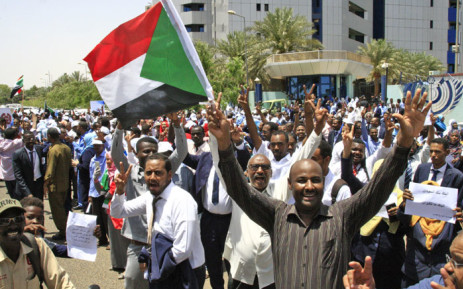
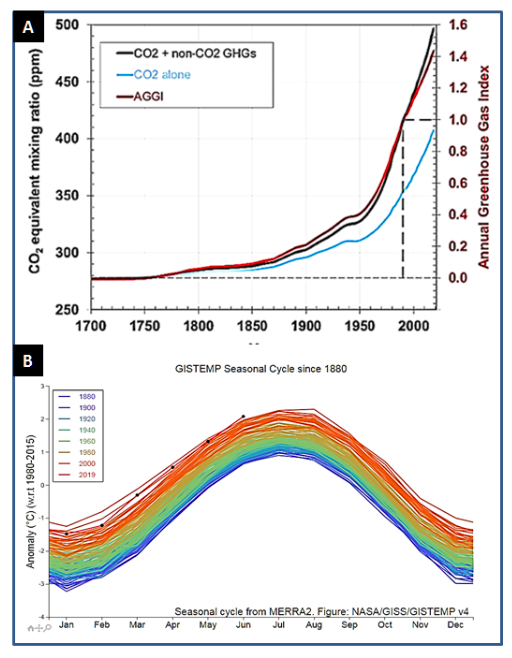
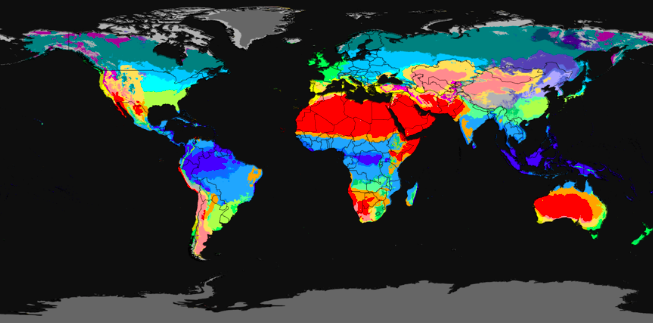
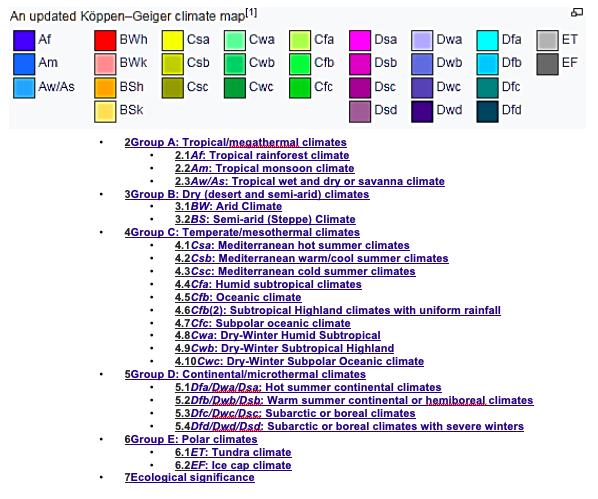
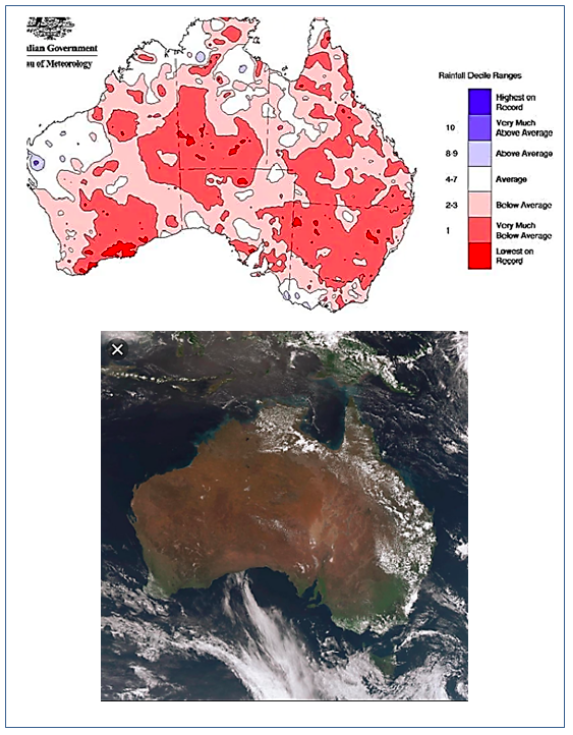
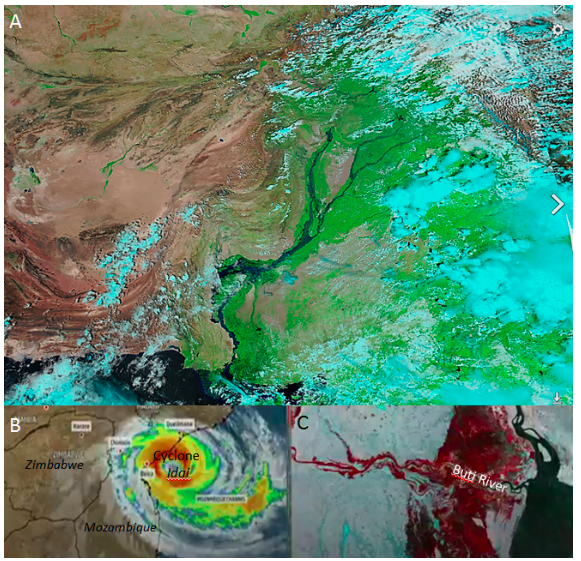
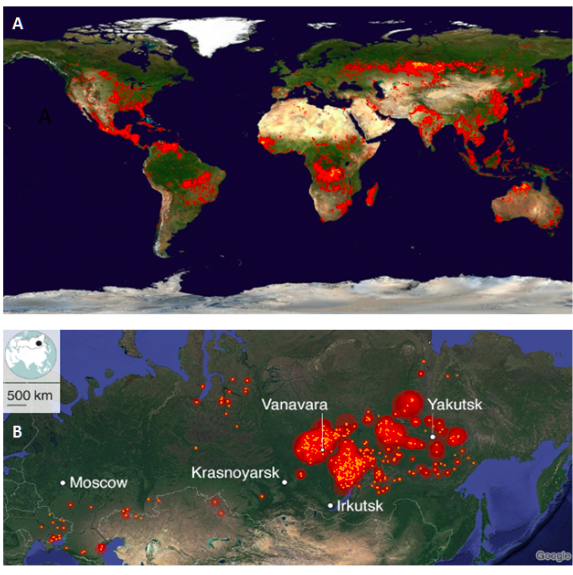
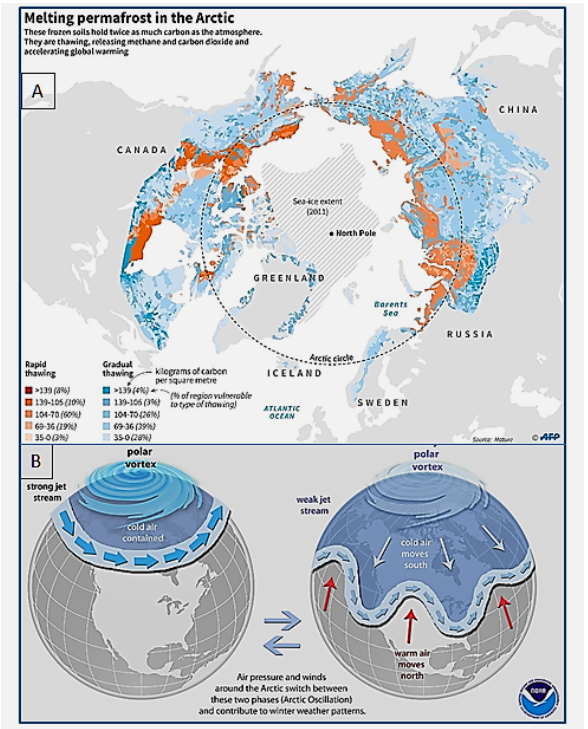
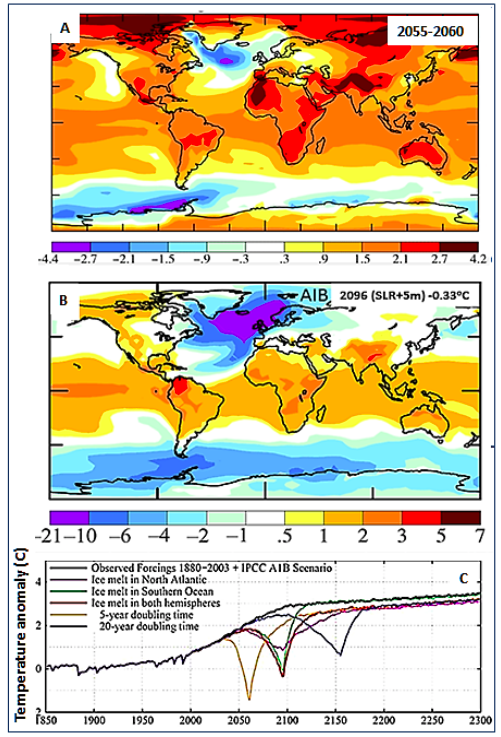




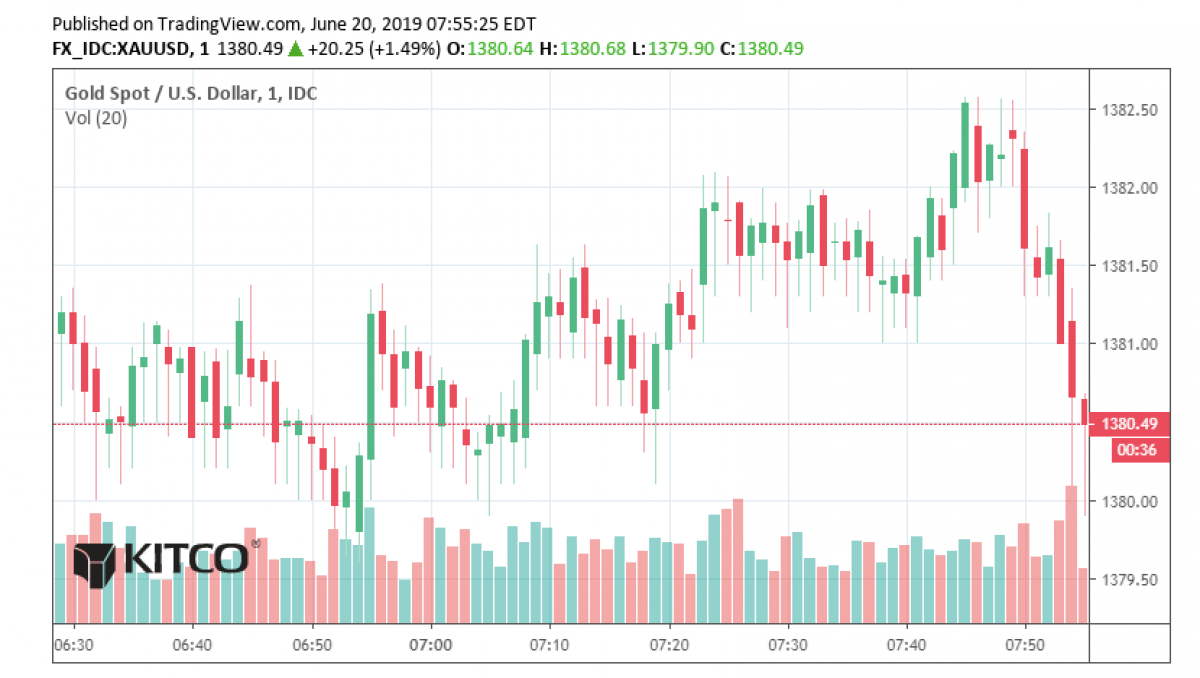

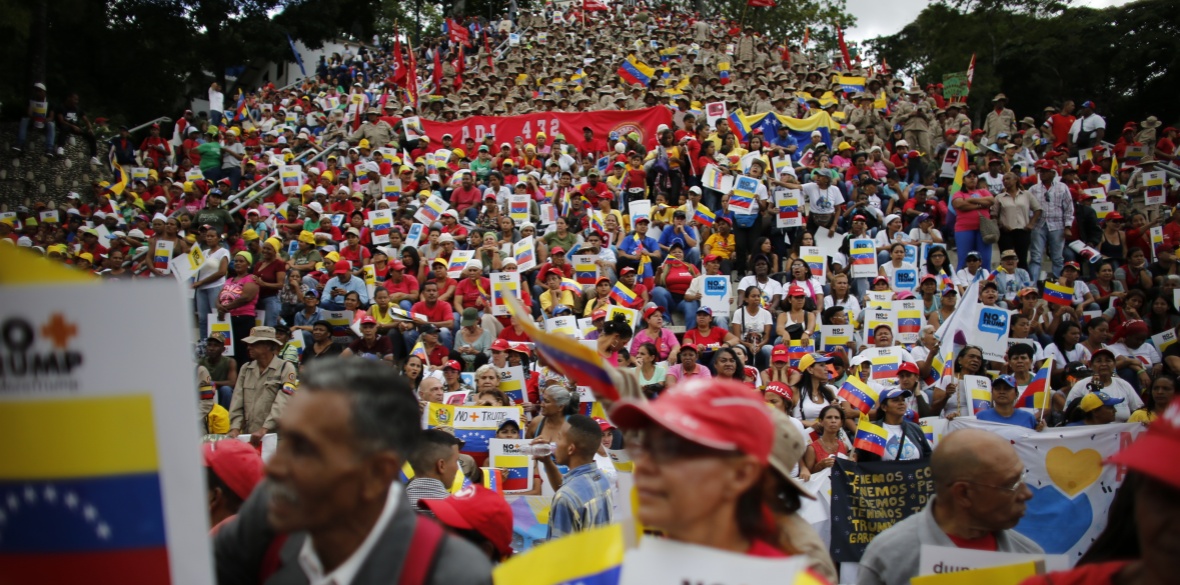
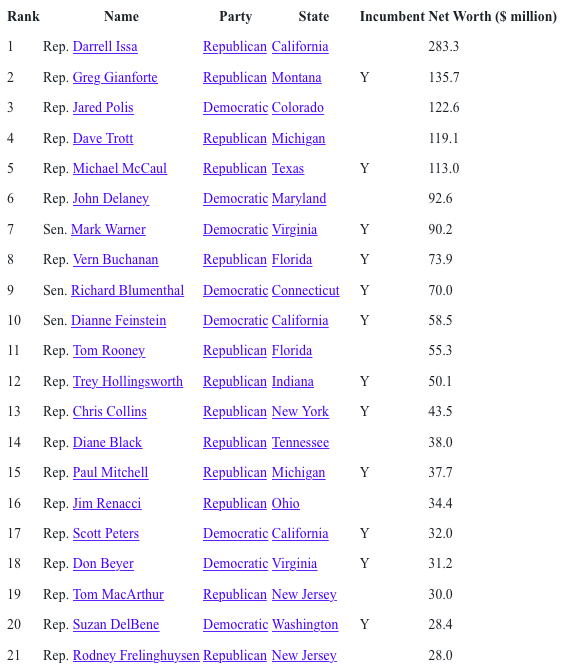
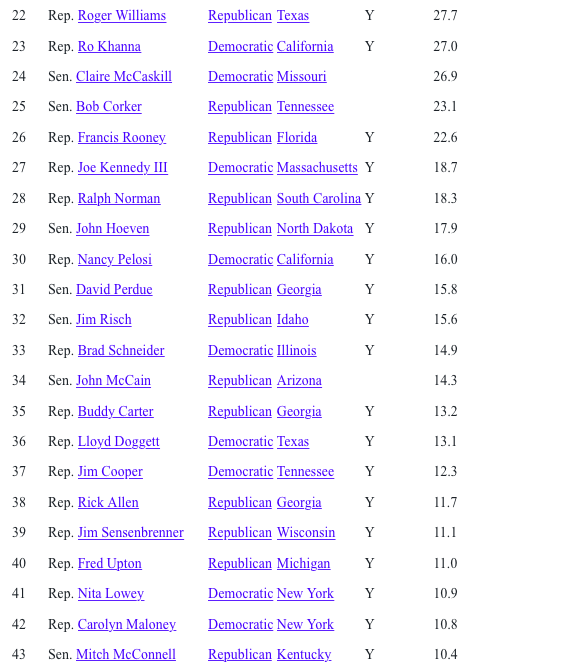
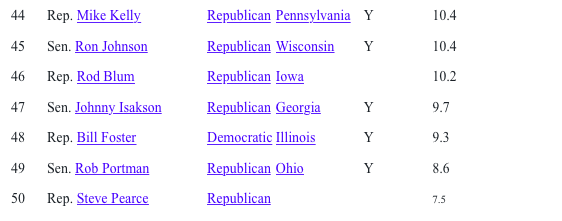
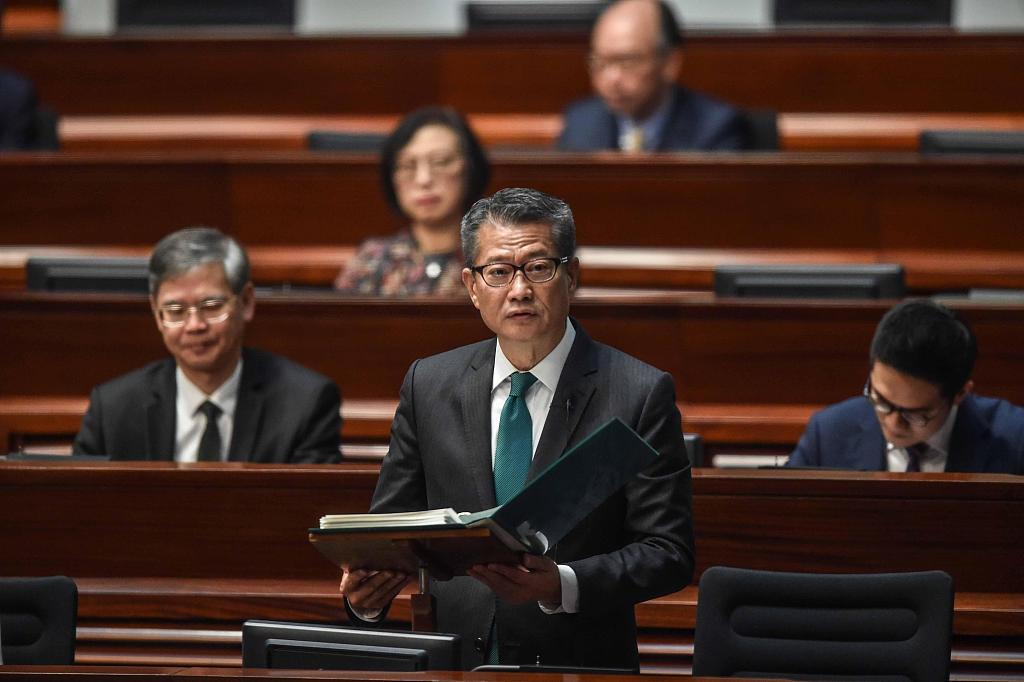
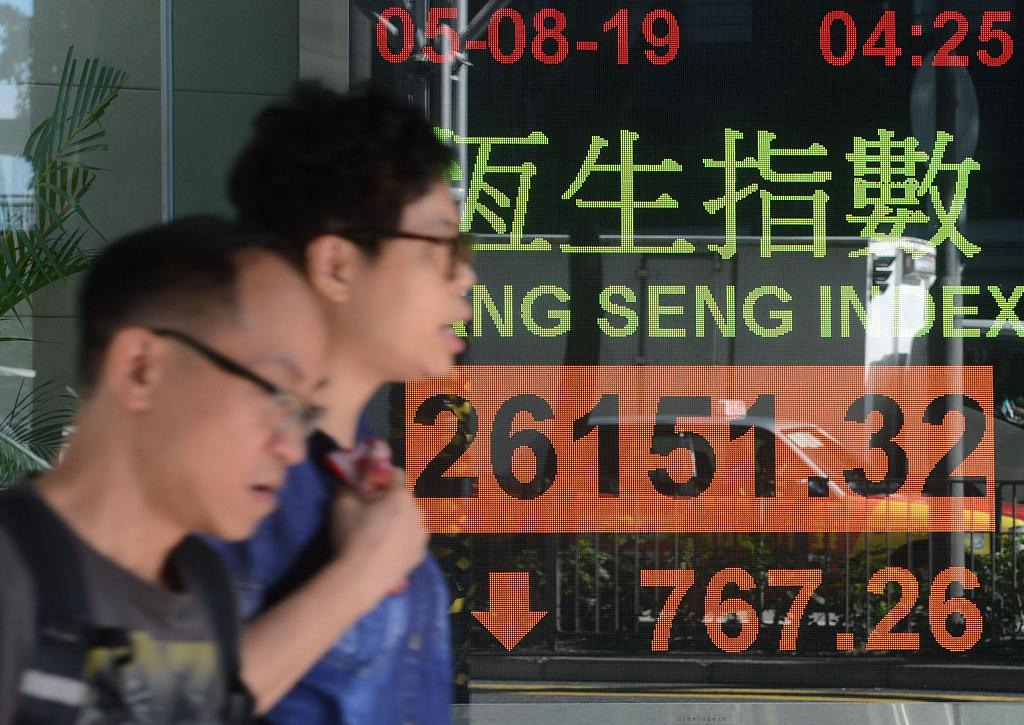

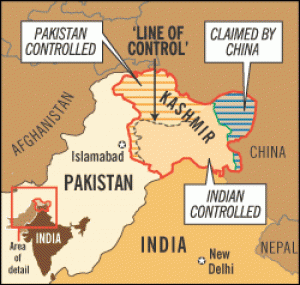




 The Cordon Sanitaire: A Single Law Governing Development in East Asia and the Arab World
The Cordon Sanitaire: A Single Law Governing Development in East Asia and the Arab World

